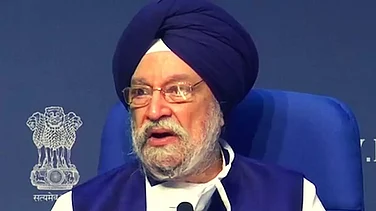Micro, small and medium Enterprises (MSMEs) form the backbone of India’s economy, contributing to nearly 30% of GDP. There are more than 6.3 crore MSMEs employing more than 25.4 crore people. Recognising their importance, the Union Budget 2025-26 has introduced several initiatives, including revised MSME classifications, increased credit access and new schemes to boost their competitiveness.
Despite these supportive measures, MSMEs face persistent challenges in their quest for growth and sustainability. Among these, energy inefficiency stands out as a critical barrier, specifically for those in the manufacturing sector. Addressing this issue is not just about reducing costs—it’s about enabling these enterprises to compete globally and align with India’s decarbonisation goals.
Bridging the Energy Gap
Energy costs form a significant proportion of operational expenses for most MSMEs. Given that MSMEs have a smaller capital base and operate at a smaller scale they tend towards lower cost and less efficient machinery. Unreliable power supply, relatively higher cost per unit of energy and limited access to advanced technology exacerbates the problem. Unlike larger corporations, MSMEs often lack the financial resources or technical expertise to invest in energy-efficient solutions.
To address this, the Union Budget 2025-26 has expanded the Credit Guarantee Scheme, increasing coverage from Rs 5 crore to Rs 10 crore. This move is expected to facilitate easier access to financing for MSMEs.
MSMEs could leverage this to invest in energy-efficiency improvements, modern machinery and digital solutions.
Additionally, the government has announced a Green Finance Initiative for MSMEs, offering concessional loans for those investing in sustainable technologies. This could make many of the energy efficiency measures financially viable.
Despite these improvements, the challenge remains in high-energy costs which reduce competitiveness and limit sustainability. Many MSMEs remain unaware of the tangible benefits of energy efficiency or perceive it as a capital-intensive initiative with long payback periods, deterring them from pursuing even simple, cost-effective interventions.
Laying the Foundation
Before delving into advanced strategies, MSMEs can start with simpler, overlooked measures:
Better maintenance practices: Given that MSMEs generally use machines that are not efficient, poor maintenance will lead to further energy loss. Good maintenance practices will prevent unnecessary energy wastage.
Power factor correction: Installing capacitors to optimise the power factor can significantly lower electricity bills, particularly for industries with large motor loads.
Energy-efficient lighting: Replacing traditional bulbs with LEDs can reduce lighting costs by up to 75%.
Increasing energy awareness: Building awareness among the workforce will help reduce losses due to idling, product rework etc, thereby reducing energy consumption.
Such initiatives provide an essential starting point, paving the way for more advanced energy-efficiency measures.
To achieve scalable results, MSMEs should consider innovative approaches:
Collaborative energy sharing models: Industrial clusters can explore shared energy resources like microgrids or collective renewable energy procurement. For example, a group of small industries in Pune collaborated on a shared solar microgrid, cutting costs by 20% while improving reliability.
Energy-as-a-Service (EaaS): This model enables MSMEs to outsource energy management to third-party providers. Providers install, maintain and monitor energy-efficient equipment, while MSMEs pay for the energy saved.
Waste heat recovery systems: Technologies like thermoelectric generators convert excess heat into usable energy. A glass manufacturer in Firozabad saved 18% on energy bills by installing a compact heat recovery system.
IoT for energy monitoring: Internet of Things (IoT) devices provide real-time energy monitoring. A leather-goods manufacturer in Tamil Nadu used IoT-based sensors to achieve a 12% reduction in energy costs.
Customised energy training: Tailored training programmes for employees on efficient-energy use can create lasting impacts. For instance, training staff on optimal HVAC [heating, ventilation and air cooling] usage led to a 15% energy reduction for a food processing unit in Delhi.
Sector-specific energy solutions: Energy-efficiency strategies must address the unique challenges of each sector to maximise impact and deliver faster results. The textile industry benefits from waste heat recovery and efficient dyeing processes, while the automotive sector can leverage hybrid energy systems and advanced robotics.
Leveraging Policies
The Indian government has introduced several schemes to promote energy-efficiency among MSMEs. The Union Budget 2025-26 has reinforced this by increasing support for technology upgradation and decarbonisation efforts. Key initiatives include:
· National Smart Grid Mission (NSGM): MSMEs in energy-intensive clusters, such as textiles and steel, can collaborate with utilities to integrate smart systems that improve reliability and optimise consumption.
· Carbon Market Participation: MSMEs adopting energy-efficient practices can monetise carbon credits in India’s voluntary carbon market.
· Technology and Quality Upgradation Support (TEQUP): This scheme provides subsidies for upgrading to energy-efficient technologies.
· Energy-Efficiency Financing Platform (EEFP): Operated by the Bureau of Energy Efficiency, EEFP connects MSMEs with financial institutions to facilitate funding for energy-saving projects.
· MSME Sustainable (ZED) Scheme: This initiative offers financial assistance for adopting cleaner technologies and achieving global sustainability standards.
· Credit Link Capital Subsidy Scheme (CLCSS): Provides capital subsidy of 15% (up to Rs 15 lakh) to MSMEs for upgrading their technology and installing new plants and machinery.
· Green Finance Initiative: A new budgetary measure that provides concessional loans for MSMEs adopting sustainable manufacturing processes.
· MSME Sustainable (ZED) Certification Scheme: A certification scheme to incentivise MSMEs to adopt zero defect zero effect (ZED) practices.
Despite these benefits, limited awareness and bureaucratic complexities hinder uptake. Bridging these gaps requires targeted outreach and capacity-building programmes by government and private stakeholders.
Lessons for India
Denmark's energy cooperatives and Australia’s shared renewable-energy projects provide valuable benchmarks. Denmark’s success is rooted in community participation and strong policy frameworks, while Australia’s models thrived on transparent governance and incentives for decentralised energy production. Japan has also been successful in integrating energy-efficient strategies within its SME sector through targeted financial incentives and policy-backed awareness programmes.
Indian MSMEs can benefit from such approaches by leveraging government support for sustainability initiatives, including the Sustainable Manufacturing Initiative announced in this budget. Adapting these models to India requires addressing fragmented industrial clusters and improving access to financing. Policies encouraging microgrids or cooperatives could unlock similar benefits for Indian MSMEs.
Energy efficiency is not just an operational improvement—it is a strategic enabler for MSMEs to remain competitive and sustainable.
The Union Budget 2025-26’s focus on technology adoption and enhanced credit support provides an opportunity for MSMEs to implement meaningful energy-efficiency initiatives. Also, for a country heavily dependent on fossil fuels, reducing energy consumption is one of the best methods to de-risk our country in terms of energy and reduce pollution. By adopting innovative solutions and leveraging available resources, MSMEs can unlock significant value while contributing to India’s environmental goals.
The journey begins with small steps, such as building awareness, adopting low-cost solutions, IoT-based monitoring or fostering a culture of sustainability.
Vinod CM is principal at dss+ India and Ankit Kapasi is lead, Sustainability Services

























